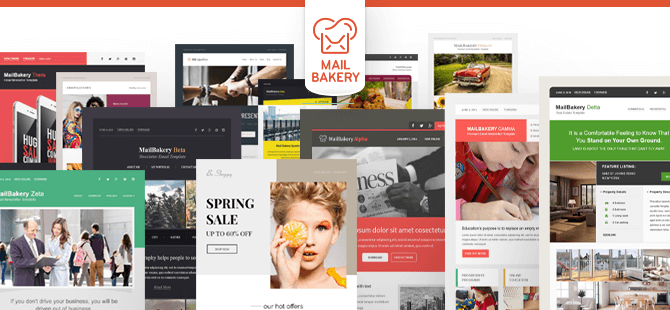Put your best finger forward – sales copywriting tips
Reading Time: 5 minutesWhen it comes to writing sales copy, we have but two primary goals: get them to read this and get them to buy that (or click that, depending on the business). Much depends on the kind of copy you write, be it email, blog, content page, or anything else that comes your way as a writer. As writer ourselves, it’s variety that’s the spice of life! Now, let’s talk about some methods to mix your talents with those of Mailbakery to make beautiful marketing pastries.
Capture their attention with a great headline

The headline is your first hook to a compelling subject. Writing a great headline is just about as important as the topic itself. The headline leads to the topic that expands to entertain, inform, and delight.
Think of it this way. If a headline doesn’t grab your audience’s attention, a recipient deletes their email without reading, or they scroll right past the blog. Here’s the recipe to a great headline:
- Get their attention. The best headlines to get people’s interest to read more are lists, how-to’s, and questions.
- The next part of the headline is the right word balance. That balance should include at least one power word (that is usually action-oriented). A third of your headline is common words, while 10-20% should be more unique or uncommon words, and the final 10-15% should be emotional.
- The final consideration is the length of your headline. It should be brief enough to scan and easy to digest. Think of the different devices, as well, making sure that the entire headline reads on your readers’ pc, tablet, or phone.
Compelling topic

Moreover, while we’re talking about subjects or topics, you don’t always want to come out too “salesy” right out of the gate unless time is of the essence on an email for a limited offer or paid ad. That content is shorter and more to the point. Keep in mind that your audience will only tolerate “buy from my company now” for so long before they lose interest. A brief value description (why they want to buy or click) followed by that call to action.
A topic on a blog or even website content should be something that your audience can relate to. It is usually a topic of interest, a common problem, or better yet, the ultimate solution. You will spin your writing to the company and how they fit into it all. Your goal in writing is to keep them coming back, especially when it comes to blogs and emails. At the same time, use this media type to demonstrate the expertise and knowledge of your company. Doing so builds your integrity and rapport with the audience, so they see you as a trusted source.
Next, speak the language of your audience. If you are trying to connect with high-level executives, your writing should be more formal than you would with the general public. Something too technical could lose readers if the content goes over their head. At the same time, you could lose readers if they consider the material to be dull and boring…or too simple. When using a casual tone, throw a little humor with the simple content to hold the interest of those that may be more advanced in their knowledge.
Call to action (CTA)

In the marketing world, everything we do is guiding our readers to a conversion of some kind, whatever we defined that to be. We refer to that as the call to action (CTA). CTA is the ultimate goal of our writing in the first place. You may want them to click from an email to the website to make a purchase or to read a blog. You may next want them to click a button to provide their email address to join the mailing list. These are all “actions” that we want to call them to proceed.
The call to action on email should be short and to the point following a value description. On a blog or website content, there may be multiple CTAs that give choices to the reader as to where and when they will click as they continue reading. On website content, the CTA may be leading to purchase, contact, or also other pages on the website, since SEO loves to see visitors spending time clicking around on a site.
By content type
Let’s take a moment next to summarize this by content type.

Emails
- A great headline in the subject line is critical to keep it from being deleted without reading.
- Express the value as a solution or other benefit, showing you relate to the audience. Hitting pain points is a great way to accomplish this.
- Keep emails brief to not lose your readers. Provide a link to a blog for more information if there is much to share.
- CTA takes the reader to your website. Always include a CTA!
- Craft an email and let it sit overnight before you send it. This practice enables you a fresh perspective before sending.
Blogs
- A great headline gets them to click to read more.
- The goal is 1000 words for good SEO results.
- Be descriptive with problems and solutions. Make an emotional connection and relate to your audience. Tie your company into the story as you tell it.
- The purpose of blogs is to inform or entertain.
Content
- The goal of content is to inform the audience based whatever the topic is for the page.
- Be descriptive and use searchable keywords.
- The call to action should be near the top of the page, and also midway or toward the bottom.
Now tie it together– turn good writing into something fantastic with MailBakery sprinkles

There was once a man who quoted something as “stylish and pleasing to look at,” and no, we’re not kidding. These words now come out of our mouth playfully before we can stop ourselves. All kidding aside, though, visual surroundings create an impact to your message.
That’s where your culinary coders at MailBakery come in. You can bring your copy to new heights with some visual components. I like to call them sprinkles. These sprinkles create a mood, standardize your brand, and guide the eye.
If you have branding in place for other aspects of your company, contact Mailbakery with your design and get a taste of their coding at no cost for your first order. We know you’ll love our sprinkles, and we’ll be ready to make you more after that.
